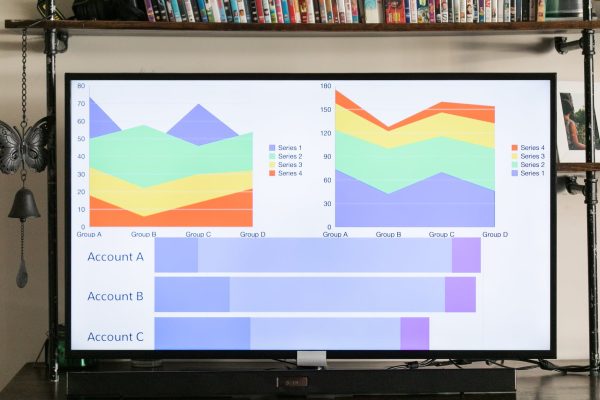How can I make Financial Models for Startups?
Financial projections is a vital part of startups. Through financial projections and planning, you can make sure you make the most profits and that all of your spending is productive.
New entrepreneurs tend to overlook the area of financial modeling and planning. There are several steps when you want to plan things out carefully. The 5 components of financial modeling are:
Cashflow forecasting

Cashflow forecasting is all about knowing how much you’re going to spend for a given period. More often than not, cashflow forecasting involves how much of your base income are you going to relegate for your Risk Income.
But first, let’s take a look at the difference between Base Income and Risk Income.
BASE INCOME – is how much money you actually have. Let’s say you have around $10, 000 to devote to this project, call it your eCommerce website or your construction business. Whatever the case, you surely have a set amount of your own money, your income to commit to investing to your business.
RISK INCOME – this is how much money you spend on overhead to ensure that your operations can start flowing smoothly and effortlessly.
Cashflow projection.
Projections are how much you’re expected to make given a certain amount of Risk Income you’re willing to invest. Let us say you’re expecting customers to convert at $1.50 per conversion for the next 60 days. If you spend $400 on Ads, how much is needed to profit from your Spend of $400?
At this point you may require 500 conversions to earn $750 for a given period. And this is the importance of making projections in context of how much risk income you’re willing to spend.
Cash Balance
Your cash sheet will show you how much money is expected to be retained at a given period. Sometimes you may have a current cash sheet of just $5000 if you’ve spent some on ads while you’re waiting to close some sales. Or if you hire an accountant and a telemarketing professional, you may expect to spend $4000 respectively on both of them before you can begin to expect some results from your new hires.
Your cash balance is a vital part of determining where you would like to go in your business cycle. You must be flexible and you cannot afford to go with the same methods if there is a need to make adjustments to your game plan.
Profit and loss forecasting.
Then you’re also going to have to make a forecast of profits and losses because losing some money is a part of investment. You’re going to have to nurture your product or service prior to it gaining some real leverage at a given period.
Maybe you should spend $4000 on Ads but wait until a sizable amount of time has given yourself a chance to retain exposure of your brand. These can come in the form of Email Marketing, Social Media Posting, Outbound Calls, and SEO spending. If your overhead is too high, then maybe you might consider a new approach to investing?
Net income
Your net income is how much you earn given how much you’ll be paying or settling with your spending. And how much you get to keep if you’re expected to pay up a certain sum to your shareholders. This is where accurate accounting and bookkeeping come in and you’re going to have to understand that your net income may vary depending on sales and how much you’re going to be spending for a certain part of your project’s timeline.
You can focus on analysis and directing your operations efficiently.
Here are some additional tips for making sure your Financial Modeling is successful
Talk about your urgent needs
What are the urgent needs of your company. What are the procurements which may cost you money and force you to to shell out more than you’re initially earning? Would you have to rent an office? If so, how much?
Will your spending shoot above $5000 or more? If so, how can you save and how can you make sure the money is being used wisely.
State your Quotas and Strategies
If you’re thinking about hiring employees, then state your quotas. Sometimes these are called Key Performance Indicators or KPI’s. These will ensure that your workers are doing the jobs they’re supposed to be doing and not slacking off. Mind you, if you want a decent employee, locally you may have to pay them $20 or more to make sure they’re of the right caliber or stature.
Talk about other expenses
If you’re going to be spending on marketing, or perhaps the cost of gas when you’re going to be making trips around the country, these things are going to cost. If you’re using them for business, then your other expenses or Miscellaneous spending should be a part of your costing sheet.
Start with the revenues you’re earning
If you already have some earnings, then make sure that you start there and maybe work backwards. You can use revenues because this will determine how much you want to keep for your Net income and those you want to funnel back into your Risk income for investments. Getting a clear picture of your earnings from the get go is vital.
Project how many employees you will need
If you’re going to be hiring employees to scale your operations, project how many you will need. And how much will it cost? Or you can project how much in rentals you’re going to have to spend each month? Any thing which constitutes regular overhead spending is something you have to estimate. Also, having a clear idea of head count is vital if you’re starting to outsource your services to other people.
Standardize your working capital
Your CapEx is necessary. For example, if you want your Risk Income to be stable, you’re going to have to set a quota for it. Let’s say you want to spend $10, 000 a month to make sure your operations keep running. Then stick with that. Having a fixed working capital is vital if you want your business to run smoothly.
Review your projections and estimates
See if there’s anything you need to change. If you outsource an accountant or bookkeeper, that’s not their job to decide if it’s good enough. You can make adjustments and dictate if any changes need to be indicated here and there. This is the importance of financial modeling and why staying flexible is necessary when it comes to managing your income and directing your spending.
If you’ve found any of these useful, we advice you to come up with your own short hand and modeling techniques! It should be output which suits your needs best. Make changes from time to time.
